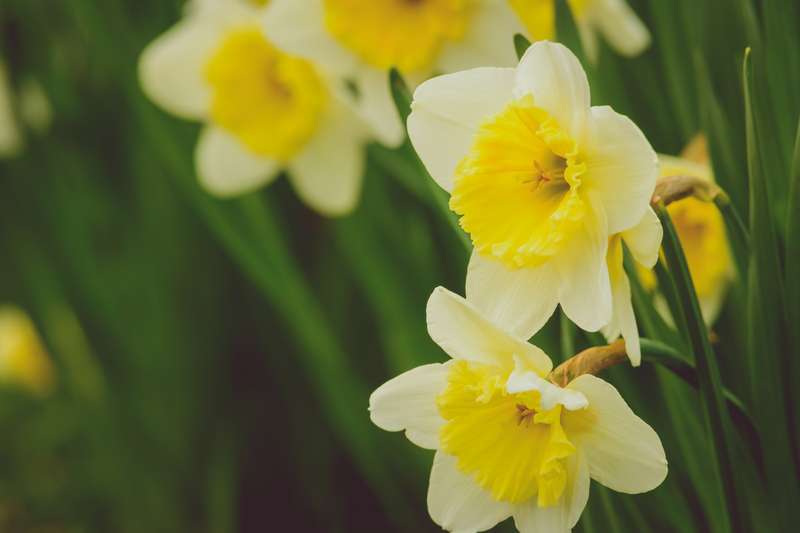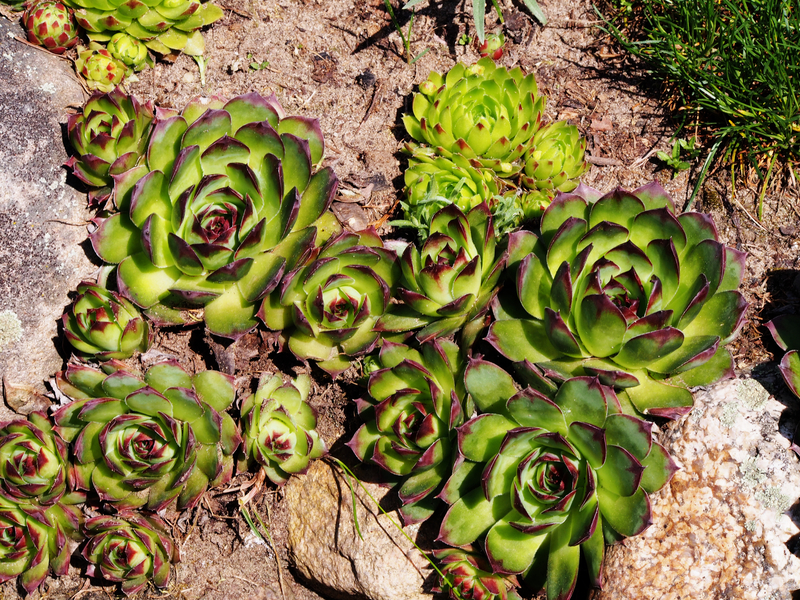Essential Winter Care Tips to Protect Your Garden Plants
Posted on 31/05/2025
Essential Winter Care Tips to Protect Your Garden Plants
Winter can be a magical season, but it also brings a host of challenges for gardeners. Sudden drops in temperature, frost, snow, and biting winds can threaten the health and survival of your garden plants. To ensure a blooming and thriving landscape come spring, it's critical to know how to protect your garden plants in winter.
Why Is Winter Protection Crucial for Garden Plants?
Chilly months can be stressful and damaging for various types of plants. Some species lose their leaves and go dormant, while others, especially evergreens and perennials, are vulnerable to harsh conditions. Unprotected plants can suffer from root damage, desiccation, frostbite, and even death. By employing key winter plant care strategies, you increase your garden's resilience and set it up for healthy growth in the warmer months.

1. Know Your Zones and Plant Hardiness
The first step in protecting garden plants during winter is understanding your USDA Hardiness Zone. Each zone outlines a region's average minimum temperature range. When purchasing new plants, check their hardiness rating to ensure they will survive your winter weather. Native plants are typically better equipped for local climate extremes, while exotics may require extra protection.
- Research your region's climate.
- Choose cold-hardy plant varieties when possible.
- Note microclimates in your garden (areas near buildings, fences, or walls offer a few extra degrees of warmth).
2. Mulching: The Winter Blanket for Roots
Proper mulching is one of the most effective ways to safeguard plant roots during winter. Mulch acts as insulation, moderating soil temperature and moisture levels.
Mulching Tips for Optimal Winter Protection
- Apply a thick 2-4 inch layer of organic mulch (e.g., bark chips, straw, leaf mold) around the base of your plants after the ground freezes but before heavy snowfall.
- Avoid piling mulch directly against stems or trunks to prevent rot and pest issues.
- For young or newly planted shrubs, mound extra mulch over the root zone for added protection.
- Remove or thin out excessive mulch in early spring to allow soil warming and prevent fungal diseases.
Mulching helps:
- Retain soil moisture.
- Prevent frost heave (plants being pushed out of the ground by freeze-thaw cycles).
- Suppress weeds even in the dormant season.
3. Watering Strategies for Winter Plant Care
Many gardeners underestimate the role of water in winter garden plant maintenance. While plants need less water in winter, dry winter wind and sun can still cause soil to dry out, especially for evergreens.
Effective Winter Watering Tips
- Water deeply before the ground freezes to ensure roots are fully hydrated.
- During dry spells in mild winter climates, continue watering on days when the temperature is above freezing.
- Avoid overwatering, particularly in clay soil, which can cause root rot.
- Mulch helps retain soil moisture and reduce water evaporation.
4. Shielding Plants from Frost and Freezing Temperatures
Frost can be particularly harmful to tender garden plants. Protecting your garden from freezing temperatures is vital if you want to prevent leaf burns, blackened stems, and overall plant decline.
How to Provide Frost Protection
- Use fleece, burlap, or frost cloths to cover vulnerable plants overnight, and remove covers during the day for air circulation.
- Construct simple frames or tunnels using stakes and row covers for vegetable beds and low-growing perennials.
- Wrap young trees and shrubs with burlap or tree wrap to prevent splitting and sunscald.
- Move potted plants to sheltered spots (garages, patios, or cold frames).
Regularly monitor weather forecasts and be ready to act quickly during sudden cold snaps.
5. Pruning: What and When to Trim
Winter pruning is another essential aspect of preparing your garden plants for winter. Proper pruning helps minimize broken branches from snow and ice accumulation and encourages healthy regrowth in spring.
Smart Pruning Guidelines
- Prune dead or diseased wood in late fall or early winter.
- Avoid heavy pruning of spring blooming shrubs (like lilacs and hydrangeas) in winter--they form buds the previous year.
- Remove crossing, rubbing, or damaged branches to prevent injury from wind storms.
- Wait for late winter (just before spring growth) to prune roses and fruit trees.
Sanitize your pruning tools to avoid spreading diseases.
6. Wind Protection for Sensitive Garden Plants
Cold winter winds can desiccate evergreens and newly planted shrubs. Windbreaks and screens help shield your garden from chilling gusts.
Ways to Protect Plants from Harsh Winter Wind
- Install temporary windbreaks using burlap screens or snow fencing.
- Plant a living windbreak (such as dense evergreens) on the windward side of the garden for long-term protection.
- Cluster container plants together on the leeward side of a building for natural shelter.
7. Caring for Container Plants During Winter
Container plants need special attention in the cold season, as their roots are more exposed to the elements.
- Move pots close together against a south-facing wall. The wall radiates warmth and offers some wind protection.
- Wrap pots in bubble wrap, hessian, or old blankets for extra insulation.
- Elevate pots slightly with feet or bricks to prevent waterlogging and icy ground contact.
- Consider moving delicate container plants indoors or into a cool greenhouse.
Use weatherproof containers such as fiberglass or heavy plastic for better insulation. Terra cotta and ceramic can crack in freezing temperatures.
8. Protecting Trees and Shrubs from Snow and Ice
Snow and ice accumulation can damage branches, especially on evergreens and plants with a broad canopy.
- Gently brush off heavy snow with a broom--do not shake, as this can break brittle branches.
- Bind together upright branches with soft twine to prevent splaying under snow load.
- Avoid using salt deicers near your garden, as runoff can damage roots and foliage. Use sand or grit as alternatives.
- Inspect and repair supports and stakes to help plants withstand storms.
9. Feeding and Fertilizing: Should You Feed Garden Plants in Winter?
Most plants do not need fertilizer in winter, as they are dormant or growing slowly. Fertilizing at this time can stimulate tender growth that is vulnerable to frost damage.
- Hold off on synthetic fertilizers until early spring when new growth appears.
- Compost and organic mulches break down slowly over winter, providing a gentle, natural source of nutrients.
- For evergreen shrubs, a late-fall dose of slow-release fertilizer can help roots stay healthy through winter.
10. Monitor for Pests and Diseases
Many garden pests and fungal diseases overwinter in plant debris and can become active in late winter or early spring.
- Clean up fallen leaves and dead plant material as part of your fall garden routine.
- Check evergreens for scale insects, spider mites, and signs of fungal infections.
- Consider applying a dormant spray or horticultural oil to fruit trees and roses to reduce pest problems before growth resumes.

Frequently Asked Questions About Winter Plant Care
- Should I cover all my garden plants every night?
No. Only cover tender annuals, new plantings, or frost-sensitive species on nights when frost or hard freeze is expected. - Is it okay to leave mulch on my garden all winter?
Yes, but monitor for excess moisture and mold. Remove mulch in spring for soil warming and aeration. - What if my perennial plants die back to the ground?
This is normal for many perennials. Protect the root zone with mulch and wait for spring regrowth.
Conclusion: Prepare and Protect for a Thriving Spring Garden
With thoughtful planning, the right techniques, and timely action, you can protect your garden plants in winter and ensure their health and vitality. Remember, start with understanding your zone, mulch generously, water wisely, guard against wind and frost, and pay special attention to container plants, trees, and shrubs. By following these essential winter care tips, you'll enjoy a beautiful, lush garden that survives the cold season and flourishes in the year ahead.
For more seasonal gardening advice and practical tips, keep visiting our blog!
```


